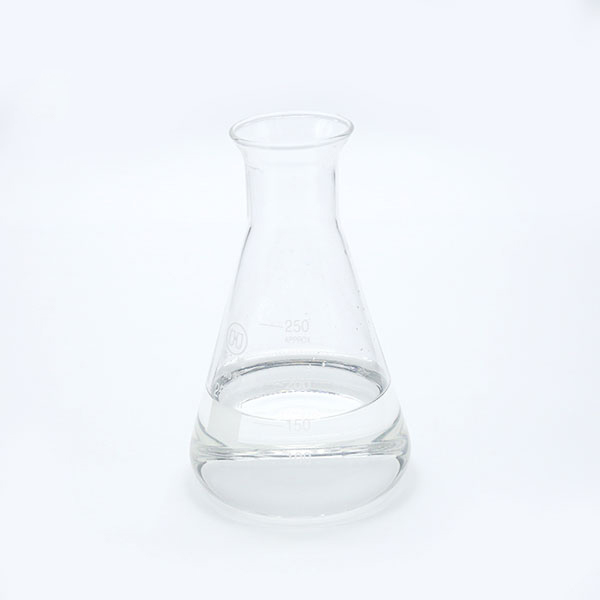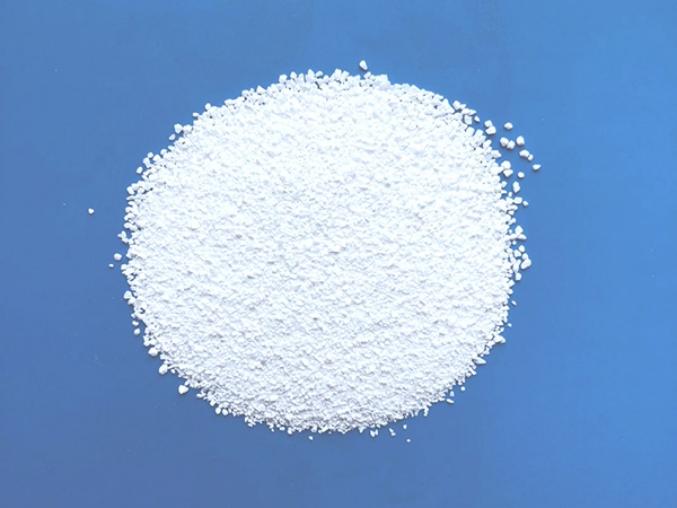Properties of Sorbitol and Its Various Uses
January 18, 2024
Sorbitol alias Sorbitol, also known as Sorbitol, D-Glucitol, Sorbol, D-Sorbitol. molecular formula is C6H14O6, is the main photosynthesis product of plants in the Rosaceae family. It is white hygroscopic powder or crystalline powder, flake or granule, odorless. Depending on the crystallization conditions, the melting point in the range of 88~102 ℃, relative density of about 1.49. Soluble in water (1g dissolved in about 0.45mL water), slightly soluble in ethanol and acetic acid. It has a cool sweet flavor, the sweetness is about half of sucrose, the calorific value is similar to sucrose, and it will not cause dental caries when used as a sweetener. The food industry is mostly 69~71% content of sorbitol liquid. Toxicity tests have shown that excessive internal use can cause diarrhea and digestive disorders.
The molecular formula of sorbitol is C6H14O6. Sorbitol liquid is an aqueous solution containing 67%~73% D-sorbitol.
Sorbitol Properties: D-sorbitol is colorless needle crystal, or white crystal powder, odorless, cool sweet taste, soluble in water, insoluble in organic solvents, it is acid-resistant, heat-resistant, and amino acids, proteins and so on are not easy to Meladic reaction.D-sorbitol liquid is colorless, transparent thick liquid. According to the different crystallization conditions, the melting point in the range of 88~102 ℃ changes, relative density of about 1.49. sorbitol liquid is bright colorless syrupy liquid, sweet taste, neutral to litmus, miscible with water, glycerol and propylene glycol.
1.can be used for the production of vitamin C raw materials, sorbitol by fermentation and chemical synthesis can be produced vitamin C. It can also be used as raw materials for industrial surfactants, with which the production of disc and tween class surfactants. Sorbitol has moisturizing properties, can replace glycerol, used in toothpaste, cigarette and cosmetic production. With sorbitol and propylene oxide as raw materials, it can produce polyurethane rigid foam with certain flame retardant properties. In the food industry, it can be used as sweetener, humectant, chelating agent and tissue improver. In the pharmaceutical industry, sorbitol after nitration generated by the loss of water sorbitol ester is the treatment of coronary heart disease drugs. Food additives, cosmetic raw materials, organic synthetic raw materials, moisturizers, solvents and so on.
2. Nutritive sweetener, wetting agent, chelating agent and stabilizer. It is a special sweetener with moisturizing function. It is not converted into glucose in human body, not controlled by insulin, suitable for diabetics. It can be used in confectionery, the maximum use amount is 5.0g/kg; in surimi and its products, the maximum use amount is 0.5g/kg; it can also be used as antifoaming agent, used in sugar production process, brewing process and soybean products process, according to the production needs of the appropriate amount of use. It can also be used for moisturizing raisins, thickening and aroma preservation of wine and refreshing drinks, as well as candies and chewing gum.

3. Synthetic resins and plastics, separation and analysis of low boiling point oxygenated compounds. Also used as gas chromatography fixative, thickener, hardener, insecticide, etc..
4. Used as gas chromatography stationary solution for the separation and analysis of low-boiling point oxygen compounds, amine compounds, nitrogen or oxygen heterocyclic compounds. Also used in organic synthesis.
5. Used as toothpaste, cosmetics, tobacco moisturizer. It is a substitute for glycerin, and the moisturizing property is more moderate than glycerin, and the taste is also better. It can be used in conjunction with other moisturizers for synergistic effect. Also used in the pharmaceutical industry as a raw material for the manufacture of vitamin C.
6. Diuretic dehydrating agent. Used in the treatment of cerebral edema and increased intracranial pressure, treatment of increased intraocular pressure in glaucoma, also used in edema and oliguria with normal cardiac and renal function.
7. Aquatic water retention agent. Ratio sucrose 2.1% + sorbitol 3.15% + compound phosphate 1.00%, all can effectively reduce the water activity of dried fish fillets, improve Ca-ATPase activity.
Food industry
Sorbitol has a cool sweetness, its sweetness is equivalent to 60% sucrose, it has the same caloric value as sugar, and it is slower metabolized than sugar, most of it is converted to fructose in liver, and it will not cause diabetes. In ice cream, chocolate, chewing gum, the use of sorbitol instead of sugar can play a weight loss effect. It can be used as raw material for the production of vitamin C. Sorbitol can be produced by fermentation and chemical synthesis of vitamin C. China's toothpaste industry has begun to use sorbitol instead of glycerol, with an addition amount of 5% to 8% (16% of foreign additions). In the production of baked goods, sorbitol with moisturizing and preservation of freshness, thus extending the shelf life of food. In addition, sorbitol can also be used as a starch stabilizer and fruit moisture regulator, aroma preservation agent, antioxidant and preservative. It is also commonly used as sugar-free chewing gum, wine flavoring agent and food sweetener for diabetics. In China, sorbitol added to food and beverages in the additive amount is generally 1.5% to 2% (foreign additive amount of 8%), which is also a large market in China's consumption of sorbitol.
Cosmetic industry
Sorbitol in the cosmetic industry is mainly used as softener, humidity regulator and lubricant, etc. It is widely used in the formulation of toothpaste, emulsion, mouthwash, perfume and deodorant cream. As the antibacterial effect of sorbitol is better than glycerin, thus adding concentrated sorbitol solution in ointment or moisturizing cream can improve the performance.
Textile industry
The chelating effect of sorbitol and iron and copper ions is often applied in the strong alkaline fabric rinsing solution; in the solution formula to improve the washing resistance of cotton fibers, sorbitol can be used as a scavenger of un-reacted formaldehyde and toughening agent after decontamination. Sorbitan monooleate is often used as a dry cleaning agent in combination with anionic surfactants. The condensation product of sorbitol with epichlorohydrin reacts with triethylenetriamine hydrazine stearate as a fabric softener.

Surfactants
Sorbitan dehydration and fatty acid synthesis of sorbitan anhydride fatty acid esters collectively known as Span class surfactants, and its poly (oxyethylene) derivatives collectively known as Tween class surfactants. Span and Tween is known as the third generation of surfactants, usually used together, often used as emulsifiers, very little skin irritation. The dispersibility of water-based paints can also be improved by blending sorbitan anhydride in the paint. Sorbitan monooleate is used as a corrosion inhibitor. Polyoxyethylene sorbitan monopalmitate and monostearate sprayed on glassware surfaces reduce the likelihood of breakage.
Polymer Industry
Sorbitol is used as a polyol component in alkyd resins and rosin esters. Polyoxypropylene-based derivatives of sorbitol are widely used in the manufacture of polyurethane rigid foams. When sorbitol replaces glycerol and pentaerythritol, fast-drying film-forming alkyl resins can be obtained with better gloss adhesion and strength. Complexes of sorbitol with various metal salts are heat and light stabilizers for polyvinyl chloride resins. Adding sorbitol to collagen films greatly increases their resistance to CO2 permeation. Sorbitol fatty acid esters are used as plasticizers, lubricants and anti-fogging agents for vinyl resins and other polymers. The monolaurate of sorbitan anhydride is used as a molding agent in the suspension polymerization of vinyl chloride to control the size, specific surface and porosity of plastic particles.
Other uses
Sorbitol can be used as softener, metal surface treatment agent, humidity regulator and adhesive in leather, paper, tobacco and metallurgy industries. It can also be used as a formulation component of freezing liquid or developing liquid. Sorbitol combined with glycerol in soft adhesive or cork binder can improve the mechanical strength and temperature and humidity resistance of the product. As a component of alkaline etching solutions, sorbitol helps prevent the formation of crusts on aluminum and aluminum alloy surfaces. Adding sorbitol to ink prevents ink from settling on the nib and keeps the nib writing fluently.




